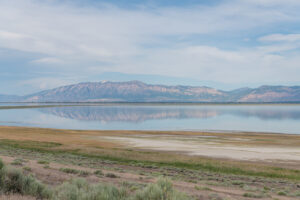Depending on the community, buildings can account for between 40% and 75% of community-level greenhouse gas emissions in Utah. But, zero energy or zero energy-ready buildings are designed, built, and operated to use dramatically less energy, resulting in dramatically less emissions!
Given that reducing energy consumption is typically the cheapest way to cut emissions, making our buildings highly energy efficient is the first step toward a low-carbon society.
Zero energy or zero energy-ready buildings are designed, built, and operated to use dramatically less energy. These buildings utilize readily available tools like improved building envelopes, daylighting and efficient lighting systems, air sealing, efficient heating and cooling systems, and more. From there, the small amount of energy still needed can be supplied by renewable energy.
How Do We Get More Zero Energy Buildings in Utah?
It all comes down to energy codes. The State Energy Code sets the minimum standard for energy performance in new buildings and major remodels. Local governments in Utah are preempted by state law from adopting more ambitious codes than the state energy code. However, a voluntary zero energy “stretch code” is a tool local governments can use to encourage new construction and major retrofits to be ultra-efficient, zero energy or zero energy ready buildings.[1]
Utah Clean Energy is working with local governments to promote voluntary zero energy stretch codes.
There is a plethora of info on stretch codes for those interested in learning more!
ZERO ENERGY READY HOME PROGRAM Sponsored by U.S. Department of Energy: https://www.energy.gov/eere/buildings/zero-energy-ready-home
ZERO ENERGY CERTIFICATION Sponsored by International Living Future Institute: https://living-future.org/net-zero/
ZERO CARBON CERTIFICATION Sponsored by International Living Future Institute: https://living-future.org/zero-carbon-certification/
[1] A voluntary stretch code may also be referred to as “energy reach code.”






